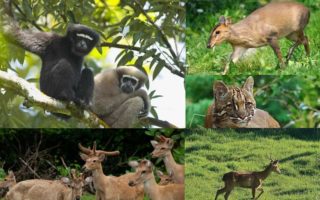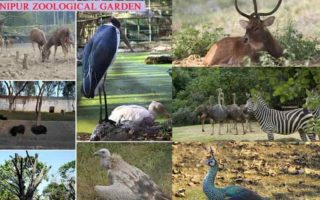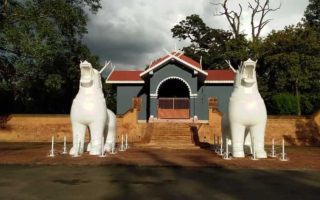Geography:
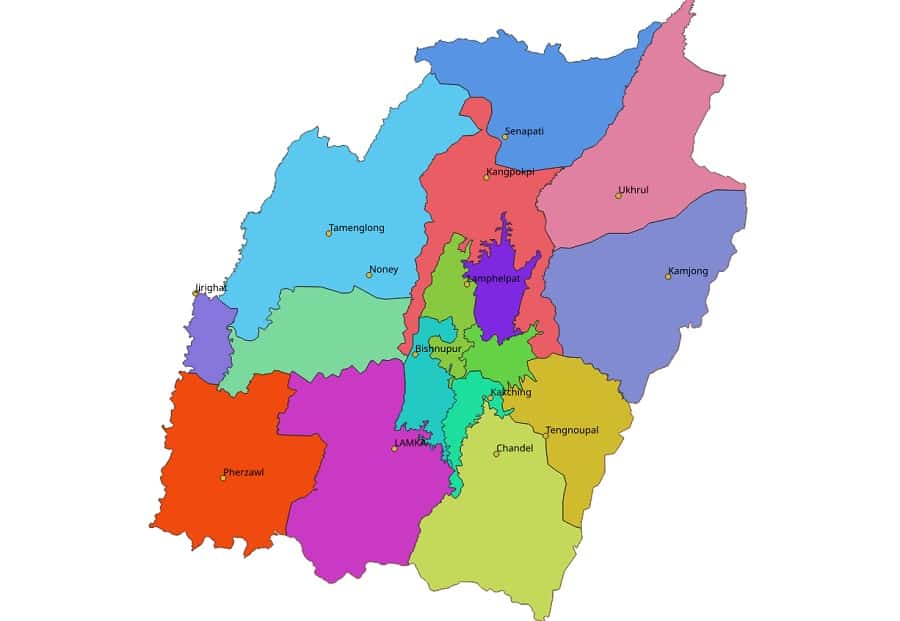
Location: Northeastern part of India.
Capital: Imphal
Main Language: Meiteilon (Meitei)
Dialects: Tribal dialects such Tangkhu, Hmar, Paite, Lushai, Mao, Vaiphei, Poula and Rongmei are heard in Manipur.
Area: The total area of the state is 22,327 sq km.
Terrain: Rugged hills, Narrow valleys, river basins, inner area consists of flat plains.
Climate: Amiable climate is noted in Manipur and temperate climate is predominant. Winters are quite chilly and often snowfall occurs. Summers are comparatively pleasant and warm.
Other Languages Spoken: English
Important Tourist Destinations:
Shree Govindajee Temple- a sacred place for Indus; Keibul Lamjao National Park- a home for 17 rare and endangered species; Loktak Lake- a fresh water lake rich in fished and has a floating island called Phumdi made of plants and weeds of the lake water; Churachandpur – second largest city of Manipur and famous for Khuga Dam.
Best Time to Visit:
October to May.
Transport:
The airport at Imphal, Tulihal airport, has direct flights connecting Imphal to Kolkata, Guwahati and Delhi.
The road transport of Manipur is extensive and developed. The roads connect almost every major towns and districts of the state. The total length of road sin Manipur is 7170 kms.
The state is linked with the rest of the country through national Highway NH-39 that will lead tourists to train station of Dimapur in Nagaland. The National Highway NH-53 connects the state with another railway station located in Assam.
History
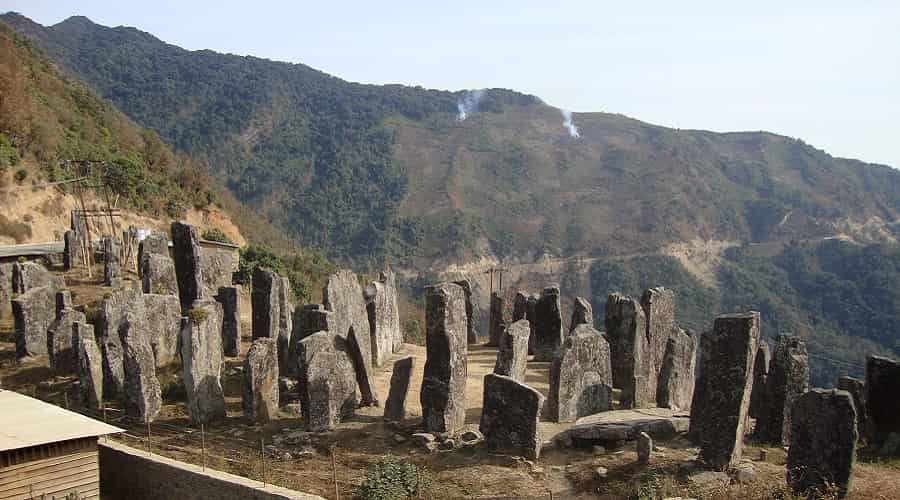
Pre-historic evidences have been discovered in Manipur our and they belong to Old Stone Age. Near Khangkhui, four caves have been discovered from where Stone Age articles like bone tools, stone tools, animal remains etc have been excavated out. Discovery of Machi is a landmark in archeology as it confirms strongly the existence of Stone Age people in Manipur. Excavations in Machi cave have led to the discovery of pebble chopper tool, which was used long back dating 30,000 BC. The state is filled with evidences that corroborate the existence of pre-historic humans as tools and other proofs of Neolithic age have also been found in Manipur.
During ancient times, Manipur was under the steady rule of royal dynasties. The state was ruled by a gifted ruler named Nongda Lairen Pakhangba. His efforts to develop Manipur are priceless and the state underwent radical improvement in culture during his reign. He was succeeded by his son who had a peaceful reign in Manipur and he too like his father improved the general cultural picture of the state. During his reign, the musical instrument Drum was invented in Manipur.
The medieval times saw the persistent rule of Meidingu dynasty. The state, like ancient period, kept up with its process of development as the rulers who came to the throne of Manipur prioritized development more than anything else. The dynasty had a great queen whose tales of bravery and still sung in Manipur. The queen of Meidingu Ningthou Khomba, Linthoingambi, made her name in history by resisting the attack of Tangkhul tribe successfully. Her skill and courage defeated the tribal people and led to their captivity finally.
The history of Manipur was rewritten with the advent of Vaishnavism in the state. During the reign of Meidingu Pamheiba, Vaishnavism came into existence. Under his royal patronage the new culture evolved as he made Chaitanya schools in Manipur. During this era several battles were fought to extend the boundaries of Manipur. The present Tripura also came under Manipur.
During the Second World War, the land of Manipur was torn with many fierce battles. The battles were fought between Allied forces and Japanese troops. The Japanese troops could not enter Imphal as they were beaten back by the Allied forces. The post-independent era in Manipur is different from the rest of the state in India. The state was a princely state under British rule from 1891 to 1947. After 1947, the state was made into a democratic government and the Maharajas were made as executive head.
Culture
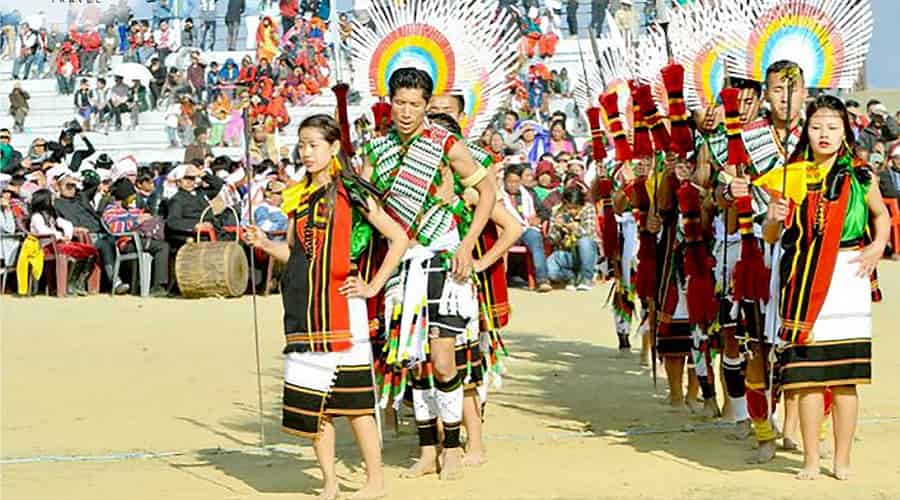
Hemmed in by hills all around the state represents a mosaic through its traditions and its cultural patterns. The state is characterized by its rich wealth of art and dance. There isn’t a single Manipuri girl who doesn’t know singing and dancing. The Manipuri dance has been acclaimed in many books, magazines and laureates find the style of Manipuri dance a pure representation of the state’s tranquil nature. The rhythm and lyrical beauty of the songs and music associated with the dance are appreciated in all parts of India. The folk dances of Manipur like Lal Haraoba , Pung Cholom, Raslila, Khamba Thaibi, Maibi dance and the Nupa dance are visually stunning and dancers often go for international concerts. Manipuri dance, which is of a devotional nature, is not the only dance of this tiny state. The dances of tribal people captivate the hearts of spectators through its rhythm and exotic costumes.
The tribal communities of Manipur are primarily of Tibetan and Burmese origin. There as many as 29 tribal communities in Manipur and all of them have their unique pattern of leading life. Four tribes are commonly noted in Manipur inhabiting different parts of the state. Meities and Pangals tribes dwell at the low level valleys of Manipur while the hilly regions of the state are populated by Naga and Kuki tribes. There are other Manipuri tribes also exist like Aimal, Angami, Anal, Chiru, Gangte, Chote, Hmar, Kachanaga, Kabui, Kairao, Koirang, Lamgang, Kom, etc.
